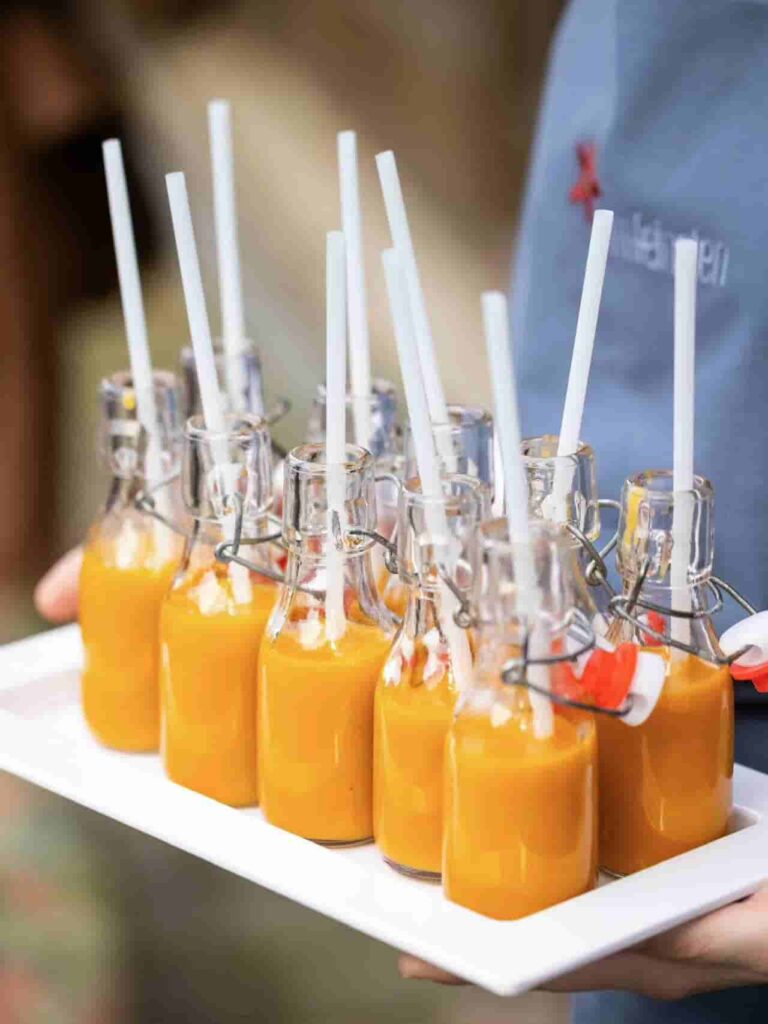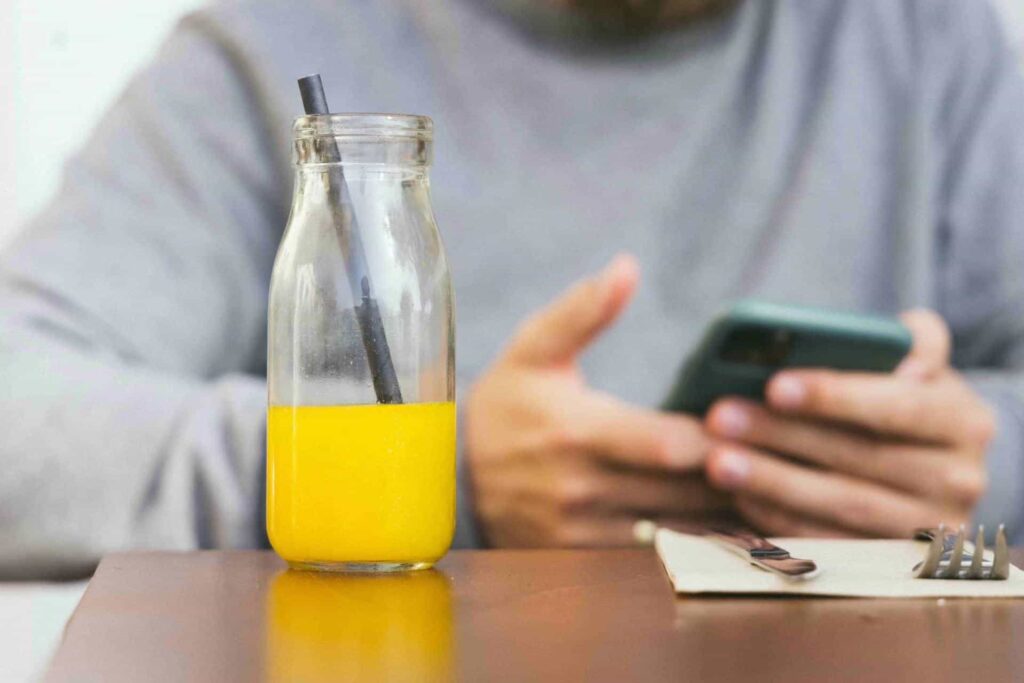The right packaging is crucial for standing out in the competitive juice market. Choosing the appropriate glass bottle size and design for your orange juice goes beyond aesthetics. It’s about meeting consumer needs, enhancing shelf appeal, and ensuring product integrity. This guide focuses on selecting the perfect bottle size and type for orange juice, with an emphasis on glass bottles. We highlight glass for its premium quality, which preserves the taste and nutritional integrity of the juice. Glass also enhances the product’s visual appeal with its clear, clean look. Additionally, glass bottles are 100% recyclable, offering significant environmental benefits. This appeals to eco-conscious consumers and reduces the carbon footprint. Through this guide, brand owners will gain insights into making informed decisions that align with market trends and consumer expectations. These decisions are key to a brand’s success.
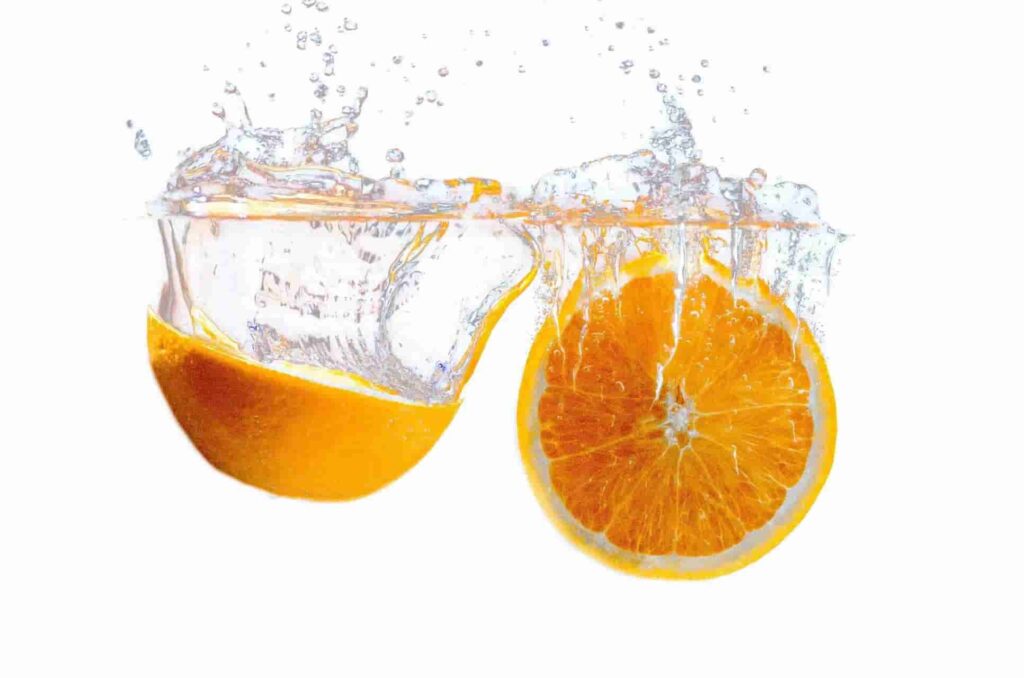
Section 1 The Significance of Glass Bottles in Juice Packaging
1.1 Durability and Sustainability
Due to several key benefits, glass bottles are a preferred choice for orange juice packaging. Their durability ensures they can withstand the rigors of transport and handling without compromising the product’s integrity. More importantly, glass is inert, meaning it does not react chemically with the contents inside. This property is essential for preserving orange juice’s taste, quality, and nutritional value, as there is no risk of chemicals leaching into the beverage. Furthermore, glass is 100% recyclable, which significantly reduces its environmental impact. Recycled glass can be reused indefinitely without loss in quality or purity. That makes it an environmentally sustainable option. Brands that choose glass packaging can leverage this attribute to boost their sustainability credentials and appeal to a growing demographic of eco-conscious consumers.
1.2 Consumer Perception
Using glass bottles for orange juice packaging significantly influences consumer perception. Glass is often associated with high quality and a commitment to health. These associations can allow brands to position their products at a higher price point, enhancing perceived value and justifying the cost to the consumer. Moreover, the transparency of the glass showcases the juice’s vibrant color, directly appealing to consumers’ associations of bright, vivid colors with freshness and quality. This visual appeal is crucial in a competitive retail environment. As it draws the consumer’s eye and can be the deciding factor in the purchase decision. By packaging orange juice in glass, brands can foster a stronger consumer connection. What’s more, encourages repeat purchases and builds brand loyalty.

Section 2 Understanding Bottle Sizes and Dimensions
2.1 Standard Glass Bottle Sizes
When choosing the right bottle size for orange juice, it’s important to consider the variety of options available and how they align with consumer preferences and market demands. Glass bottles for orange juice typically come in a range of sizes that cater to different consumption scenarios, from individual servings to family use. Here’s a detailed breakdown of the standard glass bottle sizes:
These are ideal for on-the-go consumption, fitting conveniently into lunchboxes, purses, and car cup holders. They cater to busy professionals, commuters, and students who prefer a quick, refreshing drink that they can consume in one sitting.
A versatile option, these bottles are suitable for individuals who consume orange juice more frequently or for small families that prefer not to store large quantities. They strike a balance between convenience and quantity, making them popular in smaller households or for those looking to control their intake.
Designed for family consumption, these bottles are perfect for households that consume orange juice regularly. The larger size ensures that there is enough juice for multiple servings, reducing the frequency of purchases and catering to the home environment where storage space is less of a concern.
Here is a size chart that visually represents these common bottle sizes, helping brand owners decide which size might best fit their product strategy:
Bottle Size | Height (approx.) | Diameter (approx.) | Typical Use Case |
250 ml | 15 cm | 5 cm | Individual servings, on-the-go |
500 ml | 20 cm | 6.5 cm | Daily personal use, small families |
1 liter | 26 cm | 8.5 cm | Family use, home consumption |
This chart should serve as a guideline for selecting a bottle size based on the specific needs of your target market and the typical consumption habits of your customers. Understanding these dimensions also aids in logistics planning, such as packaging, distribution, and shelf placement, ensuring that the product not only meets consumer needs but is also efficiently managed through the supply chain.
2.2 Dimension Considerations
When selecting glass bottles for orange juice, considering the dimensions—height, diameter, and neck size—is essential for several reasons that go beyond mere capacity. These dimensions significantly influence packaging efficiency, logistics, and ultimately, consumer convenience.
▶ Height
Taller bottles can be more visually appealing on retail shelves, often standing out more prominently than shorter, wider bottles. This visibility can be a critical factor in attracting consumers’ attention in a crowded marketplace. However, the increased height can also present challenges. For instance, taller bottles may not fit comfortably in standard refrigerators or cabinets, which can deter consumers who prioritize storage convenience. Additionally, taller bottles might require special considerations during transport to prevent tipping or damage.
▶ Diameter
The diameter of the bottle affects how easily it can be gripped and handled. A bottle that is too wide may be difficult for some consumers to hold securely, especially if the surface is smooth. Conversely, a slim bottle might be easier to handle but could compromise on stability when placed upright. The diameter also impacts how efficiently bottles can be packed into boxes or crates for shipping, affecting the overall logistics costs.
▶ Neck Size
The size of the bottle’s neck influences both the pouring experience and the bottling process. A wider neck can facilitate faster filling during manufacturing and easier pouring for end-users, which can be particularly appealing in fast-paced settings such as bars or busy households. However, a larger neck may also increase the risk of spillage, especially if the bottle is handled carelessly. Meanwhile, a smaller neck might enhance the control over pouring but could slow down the bottling process and frustrate consumers desiring quicker access to the beverage.
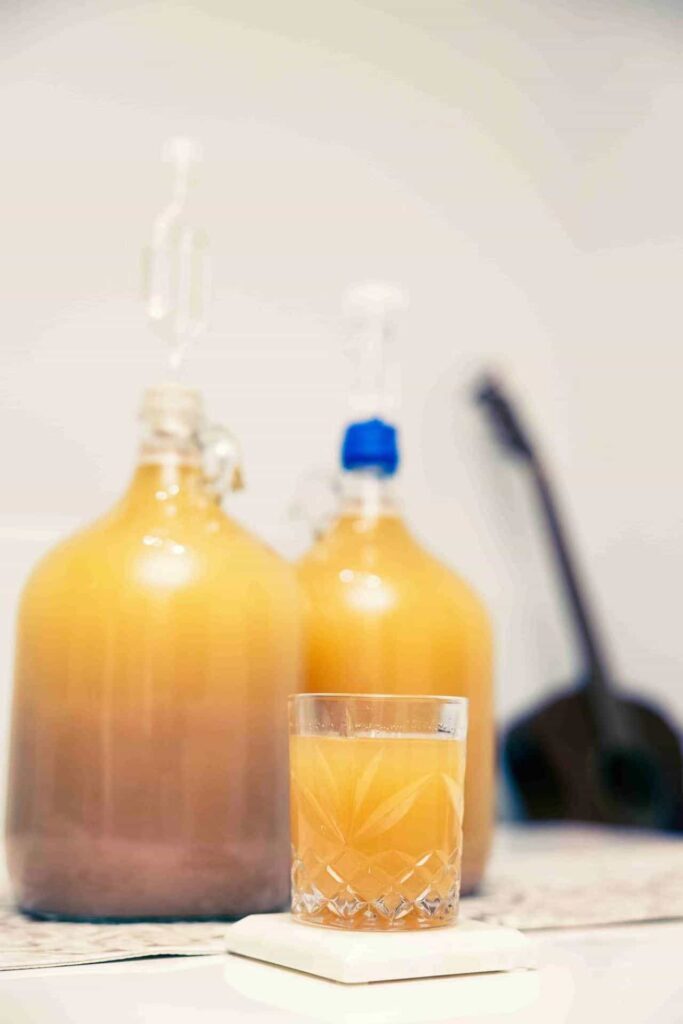
Section 3 Tailoring Bottle Size to Consumer Needs
3.1 Demographic Preferences
Selecting the right bottle size for orange juice is influenced by the target audience’s demographic profile:
○ Young Adults and Busy Professionals: This group prefers convenience and portability. Small bottles (250 ml or 500 ml) fit well in daily bags and car holders, ideal for active lifestyles. These bottles also promote portion control, appealing to health-conscious consumers.
○ Families: Families, especially those with children, favor larger bottles (1 liter or more). These offer better value and convenience for home use, accommodating multiple servings at family meals.
○ Elderly Consumers: Medium-sized bottles (around 500 ml) are suitable for older adults. They are easy to handle, not too heavy, and prevent juice wastage, aligning with the practical needs of elderly users.
3.2 Usage Scenarios
The context of orange juice consumption also dictates the best bottle size:
○ On-the-Go Consumption: Small to medium bottles are perfect for consumers needing a quick drink while commuting or post-exercise. These sizes enhance portability and fit busy lifestyles.
○ Home Consumption: Larger bottles are better for home use, such as during family breakfasts. They reduce the need for frequent shopping and serve multiple people at once.
○ Special Occasions: Premium glass bottles or unique sizes can make orange juice special for events. This approach turns a simple drink into a celebratory one.
By understanding these preferences and scenarios, brands can choose bottle sizes that meet practical consumer needs and improve satisfaction. This alignment helps in building brand loyalty and fitting into specific market niches.
Section 4 Designing Your Orange Juice Bottle
4.1 Choosing the Right Size and Shape
Selecting the appropriate size and shape for your orange juice bottles is a critical decision that hinges on several factors:
○ Brand Identity: The bottle shape should resonate with your brand’s identity and message. Whether your brand emphasizes elegance, fun, or health, the bottle’s design should reflect these traits.
○ Market Research: Understanding market trends and consumer preferences is crucial. Analyze competitors and identify gaps in the market. This data will guide you in choosing a size and shape that fulfill unmet needs.
○ Consumer Feedback: Regularly gathering and analyzing customer feedback can provide insights into what your consumers prefer and dislike about your current packaging. This information can drive improvements and innovations in your bottle design.
○ Stand Out or Fit In: Depending on your marketing strategy, you might opt for a unique shape that makes your product stand out on shelves. Alternatively, using standard shapes can facilitate faster consumer acceptance as they align with familiar expectations.
4.2 Customization Options
Customization is a powerful tool for differentiating your product in a crowded market. Consider the following options:
○ Embossing: Adding raised designs or logos directly on the glass can enhance tactile and visual appeal, making the packaging feel more luxurious.
○ Frosting: Frosted glass bottles provide a premium, sophisticated look that can attract a higher-end market segment. This effect can also obscure the juice’s appearance to focus attention on the bottle design itself.
○ Colored Glass: Using colored glass can not only attract attention but also align with flavor profiles or brand colors. For instance, amber or blue-tinted glass can protect contents from UV light, combining functionality with aesthetic appeal.
○ Cap Styles: The choice of cap, whether a traditional screw cap, a cork, or a modern flip-top, can significantly influence the user’s experience and perception of quality.
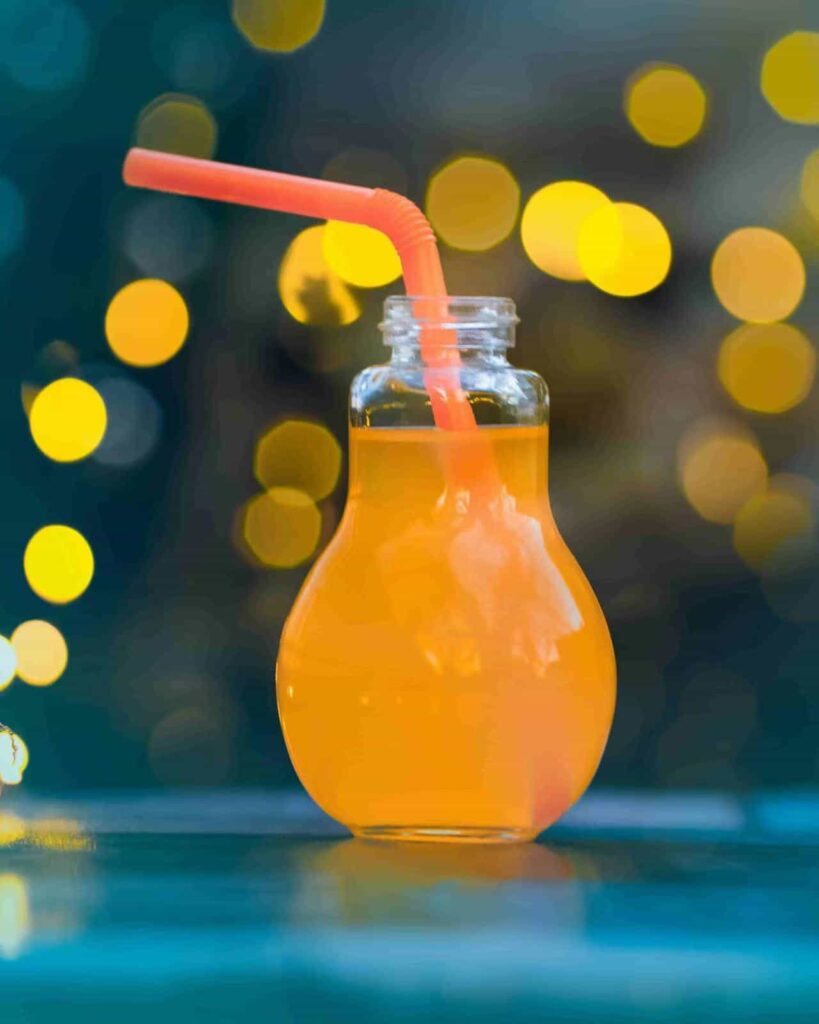
4.3 Innovative Juice Bottle Labels
Labels play a multifunctional role in packaging:
○ Branding and Identity: A well-designed label acts as a billboard on the shelf, communicating your brand’s identity and values at a glance.
○ Information Delivery: Labels must provide essential information, including ingredients, nutritional facts, and expiration dates, in a clear and compliant manner.
○ Consumer Engagement: Innovative labels can engage customers, featuring QR codes that lead to interactive content or using thermochromic inks that change color with temperature variations.
○ Complementing Design: The label design should complement the bottle’s size and shape, enhancing overall aesthetics rather than overwhelming it. The integration of label and bottle design should create a cohesive and appealing package that stands out on the shelf.
Choosing the ideal glass bottle size and design for your orange juice is essential for differentiating your brand and satisfying consumer expectations. Throughout this guide, we’ve examined a range of factors that impact this decision, including demographic trends and environmental concerns. If you’re prepared to elevate your product’s appeal with the perfect orange juice bottle, reach out to us at Smilebottles. We offer expert advice and superior glass packaging solutions customized to fit your brand’s specific requirements.




